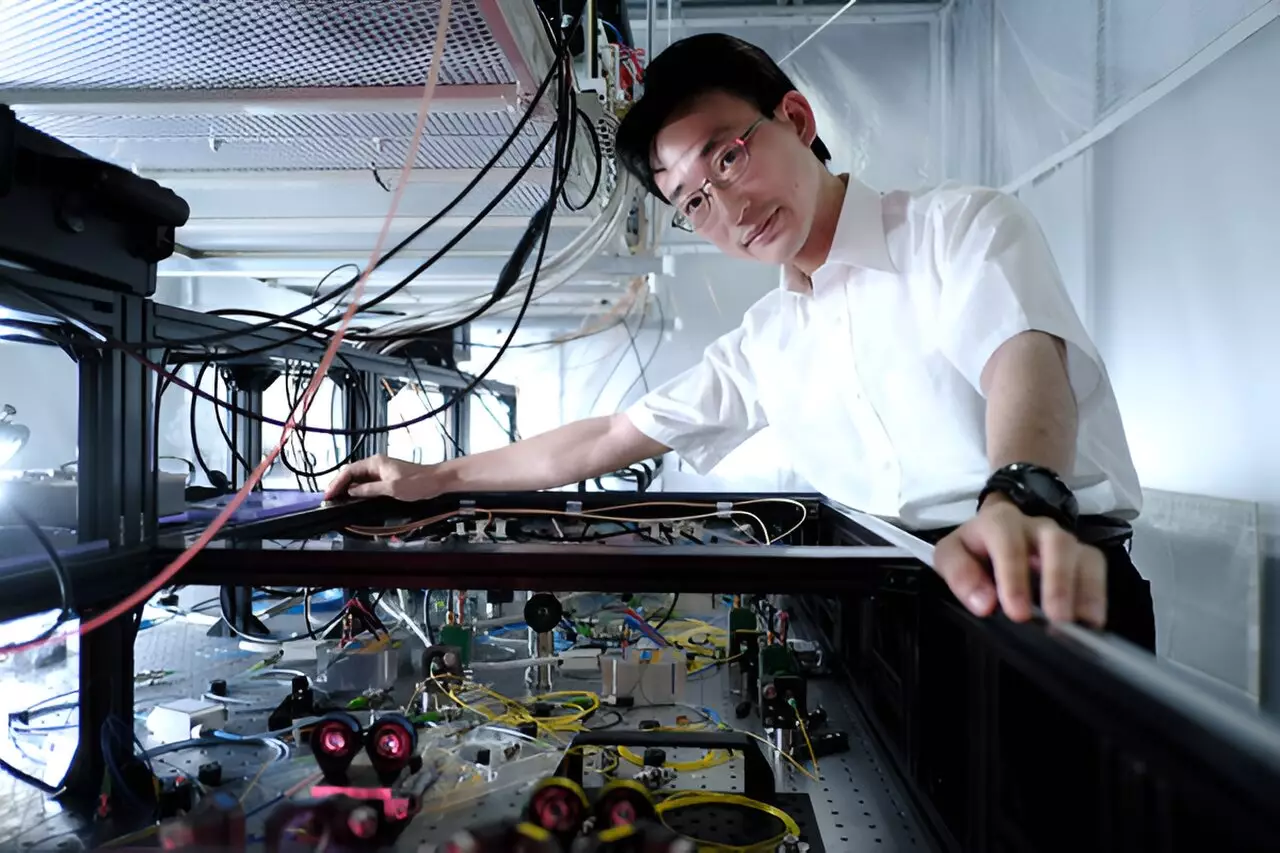The race to develop quantum computers has significantly intensified in recent years. Quantum computers, which rely on the concept of qubits or quantum bits, have achieved impressive milestones in terms of running algorithms using dozens of qubits. While most of the progress has been made in gate-based quantum computers that utilize superconducting circuits, the Optical Quantum Computing Research Team at the RIKEN Center for Quantum Computing has taken a unique approach. Led by Akira Furusawa, Atsushi Sakaguchi, and Jun-ichi Yoshikawa, the team has been focusing on measurement-based quantum computing, which processes information using a complex quantum state called a cluster state. This article explores the advancements made by the team and the potential of measurement-based quantum computing.
The Concept of Measurement-Based Quantum Computing
Measurement-based quantum computing diverges from the conventional gate-based approach by utilizing cluster states. A cluster state is formed by entangling three or more qubits through a non-classical phenomenon known as entanglement. These entangled qubits are then utilized in a measurement-based scheme, where the measurement outcome of the first qubit determines the subsequent measurements on the entangled qubits. This process, called feedforward, enables the implementation of any quantum gate or circuit through a series of measurements. Notably, measurement-based schemes are highly efficient in optical quantum computers due to the ease of entangling a large number of quantum states in an optical system.
One of the main advantages of measurement-based quantum computing, particularly in optical systems, is its potential scalability. Unlike gate-based quantum computers that require precise fabrication and physical connections between qubits, measurement-based quantum computers inherently solve these issues. Additionally, measurement-based quantum computation offers programmability in optical systems, allowing for easier changes in operations compared to hardware changes required in gate-based systems.
Nonlinear Feedforward for Advanced Gates
The Optical Quantum Computing Research Team, in collaboration with other institutions, has achieved a significant breakthrough in measurement-based quantum computing. They have successfully demonstrated the implementation of nonlinear feedforward, which is essential for realizing the full range of potential gates in optics-based quantum computers. Nonlinear feedforward has been a challenging barrier in achieving universal quantum operations in measurement-based quantum computation. By utilizing complex optics, special electro-optic materials, and ultrafast electronics, the team developed a technique that overcomes this challenge. The process involved transforming the optical signal into an electrical one and performing complex processing for nonlinear feedforward. Notably, this nonlinear feedforward technique offers speed and flexibility, making it suitable for synchronization with the optical quantum state.
With the successful demonstration of nonlinear feedforward, the team aims to apply it to actual measurement-based quantum computation and quantum error correction using their previously developed system. They also aspire to enhance the speed of the nonlinear feedforward for high-speed optical quantum computation. Despite the popularity of superconducting circuit-based approaches, the team emphasizes the potential of optical systems as promising candidates for quantum computer hardware.
The Optical Quantum Computing Research Team’s exploration of measurement-based quantum computing represents a unique and promising approach in the race to develop quantum computers. By leveraging the advantages of cluster states and measurement-based schemes, the team has made significant advancements, including the implementation of nonlinear feedforward. These advancements offer speed, flexibility, and scalability, positioning optical systems as potential contenders in the field of quantum computer hardware. As the pursuit of quantum computing progresses, measurement-based approaches continue to shine a light on new possibilities and open avenues for further exploration.


Leave a Reply